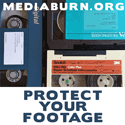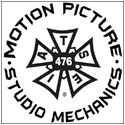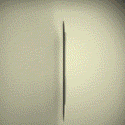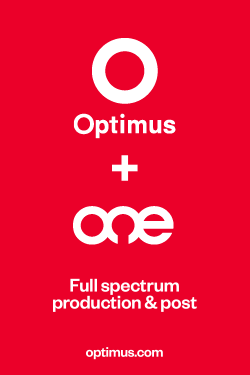
When it comes to the art of motion and title design, few names carry as much weight in Hollywood as Chicago’s own Erin Sarofsky. From Marvel’s Guardians of the Galaxy, Captain America: The Winter Soldier and Doctor Strange to Apple TV’s WeCrashed and Prime Video’s The Boys, her studio’s signature blend of bold design and cinematic flair has shaped some of the most iconic title sequences of the past decade. Now, Erin and her team of wizards have turned her talents to a true cultural cornerstone: the opening credits for Superman.
For Chicago, this moment is more than just another blockbuster on Sarofsky’s résumé; it’s a hometown hero shaping the mythology of the ultimate superhero. As founder and creative force behind Sarofsky Corp., she’s built a reputation for balancing technical mastery with emotional resonance, making her the perfect fit to reintroduce the Man of Steel to a new generation.
Director and head of the DC Studios, James Gunn, had this to say, “Sarofsky has been a part of our creative family for years. They’re always offering bold ideas, excitement about the project, and flawless execution. They have a unique ability to either invent something entirely new or evolve an existing world, as they did with Superman.”
Reel Chicago had the chance to sit down with Erin to talk about her journey, her process, and what it means to bring Chicago spirit to a global stage.
Erin, when you’re working with one of the most recognizable icons on earth, how did you decide what had to feel classically “Superman” (color, cadence, symbol language) and what you were free to break or modernize in the main titles?
That balance is always a dance of trial and error during development. It’s less about having complex rules of what’s “in” or “out,” and more about knowing which knobs you can turn up or down. With legacy material, even the slightest adjustment on the dial can feel seismic.
Designers naturally want to make their mark, but with a character like Superman, the truth is… We don’t own it. Culture does. Our role is to be stewards of that legacy, not to reinvent it for ourselves.
And of course, so much is already determined within the filmmaking process (production design, costuming, cinematography), all of which inform how our titles should feel. We want to be an instrument in the chorus, adding harmony and depth, not an air horn cutting through the score.
Your studio has defined a lot of contemporary, type-driven title design—from sleek minimalism to bold graphic systems. For Superman, what was the typographic brief? Did you design custom letterforms, and how did you balance heroism, humility, and readability across formats (IMAX, HDR, mobile)?
You nailed it. We love treating type as a main character. Too often, you see dynamic title sequences, but you can tell the type is an afterthought. For Superman, we set out with two goals: to honor the iconic 1979 Greenberg Brothers intro, and to spotlight the incredible cast and craftspeople who brought the film to life. That meant going as big and as bold as possible. We actually started by designing around the longest credit cards, letting those set the overall scale for the sequence.
The signature outline light-extrusion effect works best with crisp geometry, so we looked for typefaces with sharp angles and clean lines—something that could echo the original while stripping away some of the ornamental curves.
Montserrat Extra Bold hit the sweet spot: it carries the nostalgia, but also gives the sequence a fresh, contemporary edge that works across IMAX, HDR, and even the smallest mobile screens.
Take a look at the opening below:
How early did you get access to the theme, and what was the back-and-forth like with editorial and music to lock the title’s rhythm? Any specific beats or motifs in the score that directly shaped animation timing or transitions?
I can’t pinpoint the exact moment everything locked in, because it was such an evolving process. What I do remember is how symbiotic it felt—the score kept refining, and our animation refined right alongside it. As themes and motifs became clearer, we adjusted pacing, transitions, and reveals to land on those beats.
Certain swells and accents in the score naturally dictated where the visuals should push, pause, or resolve. The goal was never just to lay type over music, but to have the titles breathe with the score—so picture, typography, and theme moved together as one rhythm.
What practical or digital textures became your “secret sauce” here, film grain, optical artifacts, print halftones, volumetric light, 2.5D parallax? Can you walk us through one shot where the craft choices most clearly sell the mythology without leaning on literal imagery?
We knew from the start that a procedural approach was essential. On any production, especially one at this scale, credits can be noodled at the eleventh hour, and if everything is built practically, even the slightest change can create major headaches.
Our solution was to aim for the look of real, natural light but with complete flexibility. We began by filming projected type and then worked diligently to replicate that effect in a CG environment. This gave us the ability to adapt as credits evolved, while preserving all the tactile qualities.
On a project this high-profile, you’re delivering dozens of versions (languages, aspect ratios, accessibility passes). What did QC look like, and what did you build into the pipeline to keep kerning, contrast, motion safety, and logo integrity bulletproof across every output?
We don’t actually generate every localized or format-specific version ourselves. What we deliver are pristine, textless masters along with all the elements the studio needs to execute those versions at the highest standard.
You’ve built a creative shorthand with James Gunn across projects like Guardians, The Suicide Squad, Peacemaker, and now Superman. How has that relationship evolved, and what makes designing for his films uniquely different from other directors you’ve collaborated with?
When you’ve worked with someone across so many films, there’s no pretense, no need to prove yourself. It’s simply a group of collaborators at the same table, working together to find the best solution. Our strength with James has always been listening closely to his vision for each film and then translating that into a design direction that supports the whole.
One of the things we appreciate most is how open he is to bold, unconventional typography choices. You see it in Peacemaker, Guardians of the Galaxy, and The Suicide Squad; we were encouraged to take big swings.
With Superman, though, the brief was inherently different. This wasn’t about inventing a world from scratch; it was about carrying forward a legacy. We still leaned into a confident, graphic approach, but we were careful to temper that with respect for the iconography and history that already exist.
Superman is currently in theaters and ready to stream on Prime Video and other digital platforms. And Sarofsky is playing non-stop in Chicago.

The Geek is a working screenwriter, director and screenwriting instructor.
ALSO READ:
KFC enters Comeback Era with new campaign from Highdive


















